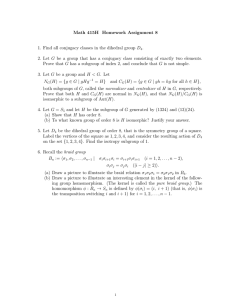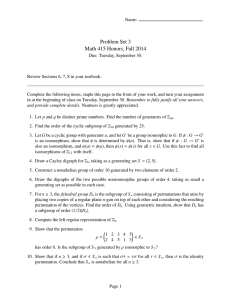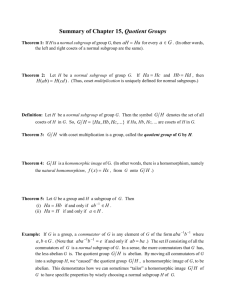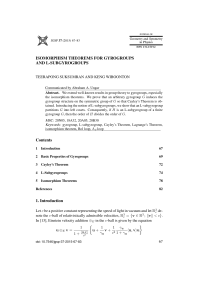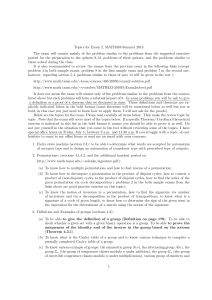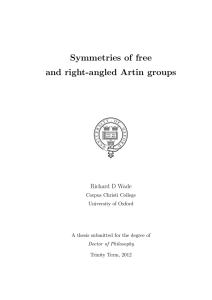Topics to be covered in the midterm on October 20.
advertisement
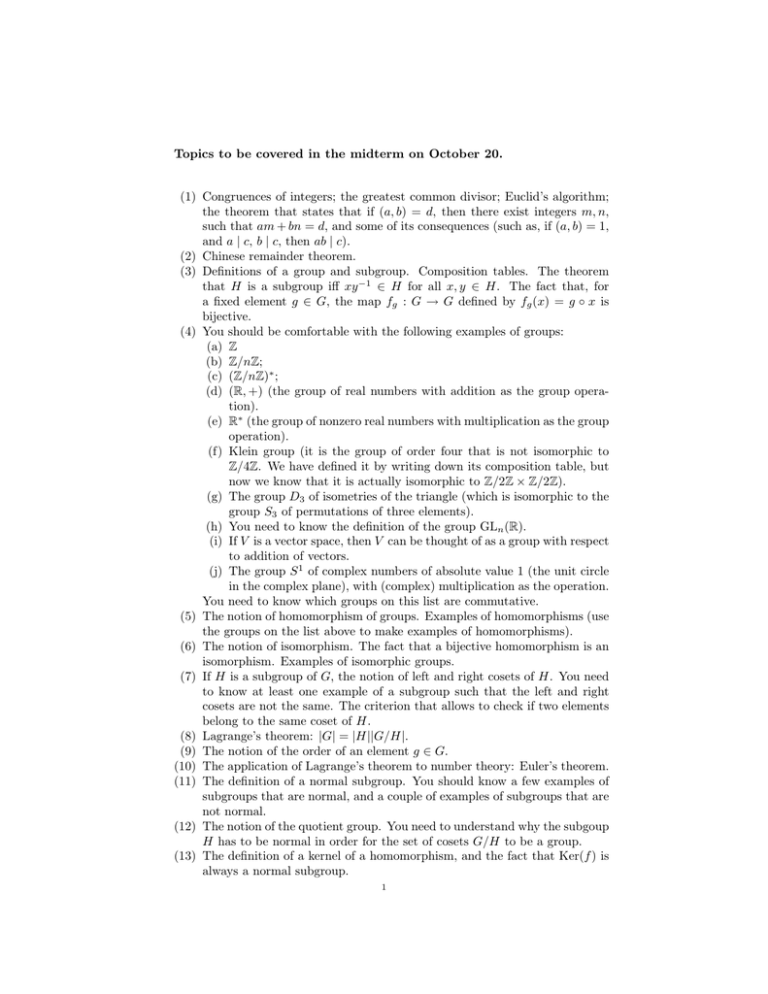
Topics to be covered in the midterm on October 20. (1) Congruences of integers; the greatest common divisor; Euclid’s algorithm; the theorem that states that if (a, b) = d, then there exist integers m, n, such that am + bn = d, and some of its consequences (such as, if (a, b) = 1, and a | c, b | c, then ab | c). (2) Chinese remainder theorem. (3) Definitions of a group and subgroup. Composition tables. The theorem that H is a subgroup iff xy −1 ∈ H for all x, y ∈ H. The fact that, for a fixed element g ∈ G, the map fg : G → G defined by fg (x) = g ◦ x is bijective. (4) You should be comfortable with the following examples of groups: (a) Z (b) Z/nZ; (c) (Z/nZ)∗ ; (d) (R, +) (the group of real numbers with addition as the group operation). (e) R∗ (the group of nonzero real numbers with multiplication as the group operation). (f) Klein group (it is the group of order four that is not isomorphic to Z/4Z. We have defined it by writing down its composition table, but now we know that it is actually isomorphic to Z/2Z × Z/2Z). (g) The group D3 of isometries of the triangle (which is isomorphic to the group S3 of permutations of three elements). (h) You need to know the definition of the group GLn (R). (i) If V is a vector space, then V can be thought of as a group with respect to addition of vectors. (j) The group S 1 of complex numbers of absolute value 1 (the unit circle in the complex plane), with (complex) multiplication as the operation. You need to know which groups on this list are commutative. (5) The notion of homomorphism of groups. Examples of homomorphisms (use the groups on the list above to make examples of homomorphisms). (6) The notion of isomorphism. The fact that a bijective homomorphism is an isomorphism. Examples of isomorphic groups. (7) If H is a subgroup of G, the notion of left and right cosets of H. You need to know at least one example of a subgroup such that the left and right cosets are not the same. The criterion that allows to check if two elements belong to the same coset of H. (8) Lagrange’s theorem: |G| = |H||G/H|. (9) The notion of the order of an element g ∈ G. (10) The application of Lagrange’s theorem to number theory: Euler’s theorem. (11) The definition of a normal subgroup. You should know a few examples of subgroups that are normal, and a couple of examples of subgroups that are not normal. (12) The notion of the quotient group. You need to understand why the subgoup H has to be normal in order for the set of cosets G/H to be a group. (13) The definition of a kernel of a homomorphism, and the fact that Ker(f ) is always a normal subgroup. 1 2 (14) The Isomorphism theorem: if f : G → H is a homomorphism, then the group f (G) is isomorphic to the quotient group G/Ker(f ). (15) Some examples of application of the Isomorphism theorem. (16) The definition of the centre Z(G) of a group G (it appeared in homework), and the fact that Z(G) is a normal subgroup. Examples of groups with large centre, and with small centre. (17) The notion of a product of groups. (18) Chinese remainder theorem as a statement about isomoprhism of the groups Z/M Z and Z/m1 Z×· · ·×Z/mn Z, where (mi , mj ) = 1, and M = m1 m2 . . . mn .


